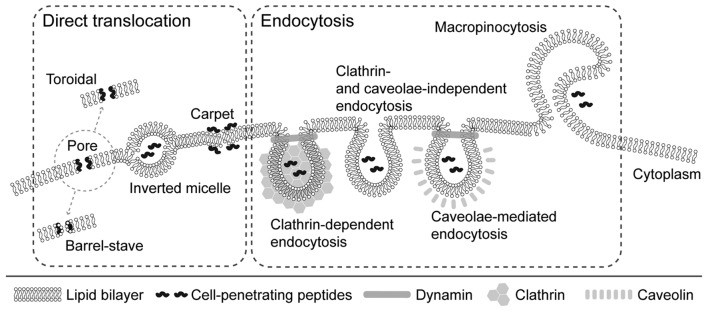Figure 2.
Mechanisms of cellular internalization of CPPs. Different mechanisms of cellular uptake of CPPs have been proposed. These mechanisms include direct translocation and endocytosis. Several models have been proposed for direct translocation: i) Formation of transient pores (the toroidal pore model, where CPPs interact with polar groups of membrane phospholipids, and the barrel stave model, where CPPs assume an amphipathic α-helix structure when inserted into the cellular membrane); ii) inverted micelles, where CPPs disturb the lipid bilayer, leading to the formation of inverted hexagonal structures, and iii) the carpet model, where CPPs transiently destabilize the cellular membrane by their association to its surface, leading to the reorganization of phospholipids. Uptake of CPPs through the cell membrane was demonstrated to proceed via several endocytotic pathways: i) Clathrin-dependent, ii) clathrin- and caveolae-independent, and iii) caveolae-mediated. In addition, CPPs may be internalized by macropinocytosis. CPPs, cell-penetrating peptides.

